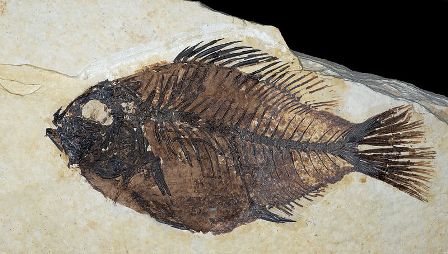- Series:Fossils, Transcript English
1 Timothy 6:20
“O Timothy, keep that which is committed to thy trust, avoiding profane [and] vain babblings, and oppositions of science falsely so called…”
How long does it take to make a fossil? Would you believe that when the correct natural conditions are duplicated in the laboratory, the process only takes a few days to get underway?
Anything that was once alive can become a fossil. Bone, hair, feathers and even cloth can fossilize. However, the conditions must be just right, or the candidate simply decays. This is what happens to most things that were once  alive. To become fossilized, the candidate for fossilization has to be protected from air and other things that could cause decay. Then the original once-living molecules are replaced by molecules of silica before they can decay.
alive. To become fossilized, the candidate for fossilization has to be protected from air and other things that could cause decay. Then the original once-living molecules are replaced by molecules of silica before they can decay.
We are often given the idea that it takes millions of years for something to be fossilized. Scientists who believe in creation have never accepted that fact because they do not believe that the world is that old. Now, new research into how things fossilize shows that believers in a young creation were right. Scientists made their discovery while they were studying fossilized silk fabric from a human burial site. They discovered if copper was buried with the person, the copper atoms would be washed into the silk by water and begin to deposit within the fiber. The result was a fossil that even showed the detail of the original threads in the cloth. In lab tests, researchers found that it only takes a few days for a considerable amount of copper to deposit in the silk.
The truth is, you could be older than a fossil!
Prayer:
Dear Father, I thank You for the work of scientists who are showing that true science does not contradict the truth of Your Word. Prosper their work and give them the support of Your people so that we can make a better witness to those who are hindered by stumbling blocks raised up by false science. In Jesus’ Name. Amen.
Notes:
Stefi Weisburd. “Fossils of Fabrics and Fibers.” Science News, Vol. 126, p. 328. Photo: Fossil found at Fossil Lake in Wyoming. Courtesy of Didier Descouens. Licensed under the Creative Commons Attribution-Share Alike 3.0 Unported license.
